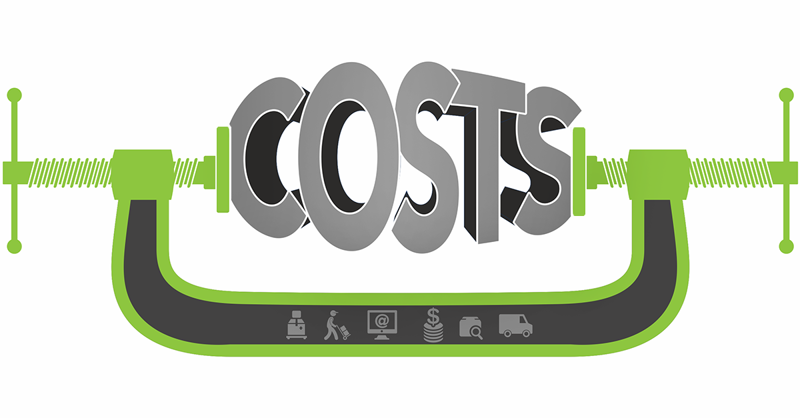In 2016, eCommerce in the U.S. grew 15% to $395b. During the same period, parcel spend grew 10% in the U.S., according to the Council of Supply Chain Management Professionals (CSCMP). LTL only grew by .5%, which reflects the continued shift to smaller more frequent shipments. eCommerce and parcel shipping are in lockstep and their pace is quickening. But with Amazon establishing free shipping as the new normal (now for premium services like same-day and Sunday delivery), eCommerce businesses are scrambling to protect their margins, even as the market continues to heat up.
With Amazon’s shipping costs running at around 12% of sales, logistics professionals are starting to look at how they can reduce shipping costs as a percentage of revenue. It’s now a critical issue.
Accurate Cost Accounting
The first step is determining what your shipping costs are. Today most businesses, especially those that rely on carrier-provided shipping systems, have only a very fragmented view of what they spend on shipping. Add to this, the information they get from various carrier-provided systems are not “normalized” for reporting purposes and in any case do not represent the final costs which include unexpected fees that show up on carrier invoices.
Multi-carrier parcel TMS solutions can operate as cash registers, capturing costs no matter where they are incurred across the extended enterprise including purchasing, shopping carts, order entry, warehouses, suppliers, stores, returns, parts distribution, and mail centers. Parcel TMS systems that match carrier invoice costs against expected costs provide a final “source of truth” about transportation expenditures.
Transportation Analytics
Eyeballing management reports can only take you so far in understanding how you can save money. With access to accurate, consolidated transportation cost data, analytics and modeling tools can help provide insights into how and where to find potential cost savings. “What if I used a regional carrier for this delivery area?”, “What if I were to drop ship from suppliers is zone 6?”, and “What will the new rate change mean to me in terms of increased costs?” are just a few of the questions that business analytic tools could answer.
Competition is Good, More is Better
Ten years ago, UPS and FedEx ruled the roost. Then USPS became a more credible option because of its ability to perform last-mile delivery services. Now regional carriers and crowdsourced delivery services are coming out of the woodwork to meet increasing consumer demand for delivery options. With the right data at your disposal, combined with TMS analytics and controls, it is easier than ever to reduce delivery costs while providing superior service to customers.
Rate Negotiation: “I Do it Once a Year, They Do it Every Day”
Logistics professionals take a lot of pride in their ability to manage carrier relationships and negotiate contracts. All are convinced they have the best discounts. But how do they know? This is not an issue of skill – it’s really about information. This is an imbalance and disadvantage all shippers face with rate negotiations. Shippers need to know that their rates are competitive. Of course, getting below market rates is ideal – but NOT overpaying is really the minimum expectation most companies should have.
Third party transportation experts are able to see across many businesses, do benchmarks, and see what constitutes a competitive rate. What’s more important than what your peers are paying? It’s not unusual for these consultants to find 20% savings by helping to make “adjustments” to carrier contracts and in a way that is fair to the carrier. Consultants can also find the optimum mix of multiple carrier services. This is significant with Amazon using shipping costs as a competitive weapon.
Understanding SKU Transportation Costs
If shipping is free, then how do you price goods to take transportation costs into account? A dartboard could help, but a better approach is to use analytics to look at historical data and allocate transportation costs to each SKU. You are then in a position to make more accurate assumptions about how to price your products based on their total “landed” cost. TMS cartonization and palletization algorithms can also tell you how to pack and ship items at the lowest possible cost, based on order SKUs.
Conclusion: Shipping Cost Containment is a Critical Issue
As eCommerce continues to drive demand for last-mile delivery services, you can expect your costs to go up at the same time consumers expect more free delivery options. Something has to give. Proactively addressing transportation cost management is the only path to protecting your bottom line.
